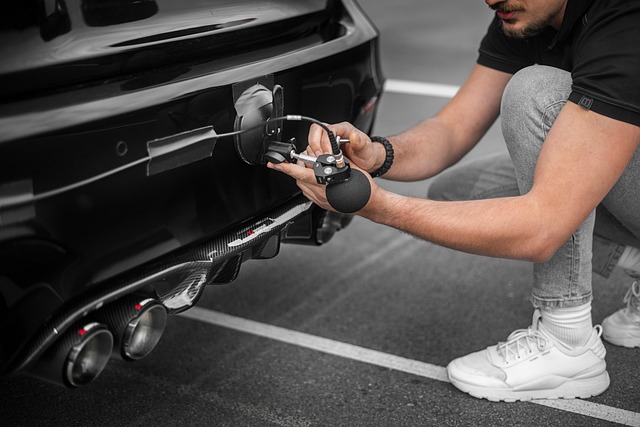“Looking to register your car in California? This comprehensive guide will walk you through the process, ensuring a smooth experience. From understanding key requirements to gathering essential documents, this article covers it all. Learn about the importance of a valid DMV VIN verifier and how to utilize online services for convenience. By following these steps, registering your vehicle in California has never been easier.”
- Understand California Vehicle Registration Requirements
- Gather Necessary Documents for Car Registration
- Visit Your Local DMV or Use Online Services
- Complete the Registration Application Form
- Verify VIN and Pay Registration Fees
Understand California Vehicle Registration Requirements

Before registering your car in California, it’s crucial to understand the state’s specific requirements for vehicle registration. The California Department of Motor Vehicles (DMV) mandates that all vehicles operated within the state be properly registered and have an up-to-date inspection. This includes a comprehensive check of essential components like brakes, lighting, and emissions systems. To facilitate this process, many California residents opt for convenient mobile vin verification services, which allow for a quick and efficient initial inspection from the comfort of your home or office.
The unique vehicle identification number (VIN) plays a pivotal role in this procedure. The DMV relies on accurate VIN data to ensure every registered vehicle is accounted for and meets safety standards. A reliable VIN verifier, whether used online or through mobile apps, can streamline the registration process by cross-referencing your vehicle’s information with national databases, enhancing accuracy and saving you time. This initial verification step is a critical part of navigating California’s vehicle registration requirements, ensuring both compliance and peace of mind for drivers.
Gather Necessary Documents for Car Registration

Before you start the car registration process in California, make sure to gather all the essential documents. This includes your vehicle’s Registration Application (Form DMV-123), which can be obtained from the Department of Motor Vehicles (DMV). Additionally, you’ll need proof of insurance, a valid driver’s license, and the Certificate of Title, often referred to as the “title” – this is crucial for establishing ownership. The Vehicle Identification Number (VIN) plays a significant role in this process too. You can verify your VIN using official DMV services or even opt for a convenient mobile VIN inspection to ensure everything is in order before heading to the DMV.
Remember, accurate documentation is key to a smooth registration experience. A mobile VIN inspection can be particularly handy, allowing you to address any potential issues early on. This way, you’ll avoid unnecessary delays and make sure your vehicle meets all California registration requirements.
Visit Your Local DMV or Use Online Services

Registering a car in California involves an important step that many drivers overlook: verifying your vehicle’s VIN (Vehicle Identification Number). This process ensures the authenticity and history of your car, which is crucial for safety and security. You have two main options to complete this task.
First, you can visit your local Department of Motor Vehicles (DMV) office. Here, you’ll need to present essential documents, such as proof of ownership and identification. A DMV vin verifier will then cross-check your VIN with national databases to reveal any issues or hidden history related to the vehicle. Alternatively, many services now offer online VIN inspection using a mobile vin verifier, allowing you to complete the process from the comfort of your home. This method is particularly convenient, saving time and effort while providing reliable results.
Complete the Registration Application Form

To begin the registration process, you’ll need to complete the Registration Application Form provided by the California Department of Motor Vehicles (DMV). This form requires detailed information about your vehicle, including its make, model, year, and unique identifying number known as the Vehicle Identification Number (VIN). Accurately recording this data is crucial, as it facilitates a swift and accurate verification process.
A critical step before submitting your application involves utilizing a DMV-approved VIN verifier, either through a mobile vin inspection or an online tool, to ensure the VIN’s legitimacy and accuracy. This validation process not only enhances the integrity of your registration but also safeguards against potential fraud. By combining these steps with the comprehensive details provided in your application, you set the stage for a seamless car registration experience in California.
Verify VIN and Pay Registration Fees

Before you begin the registration process, it’s crucial to verify your vehicle’s VIN (Vehicle Identification Number) and ensure it matches the information provided by the manufacturer. You can use a DMV vin verifier or even a mobile vin verification app for this step. A quick and accurate VIN inspection ensures that all details about your car—from its make and model to its year of production—are correct, which is essential for completing your registration smoothly.
Once you’ve confirmed the VIN, the next step involves paying the necessary registration fees. California has specific requirements and charges associated with vehicle registration, which include a base fee as well as additional costs based on factors like the type of vehicle and its emissions status. Ensure you’re prepared to pay these fees using an accepted method when submitting your application at a DMV office or through their online portal.
Registering a car in California is a straightforward process, whether you do it in-person at your local DMV or online. By understanding the requirements, gathering the necessary documents, and completing the application form accurately, you can ensure a smooth registration experience. Don’t forget to verify your vehicle’s VIN (using a trusted dmv vin verifier) and pay the required fees. With these steps taken care of, you’ll be legally registered and ready to hit the California roads in no time.



